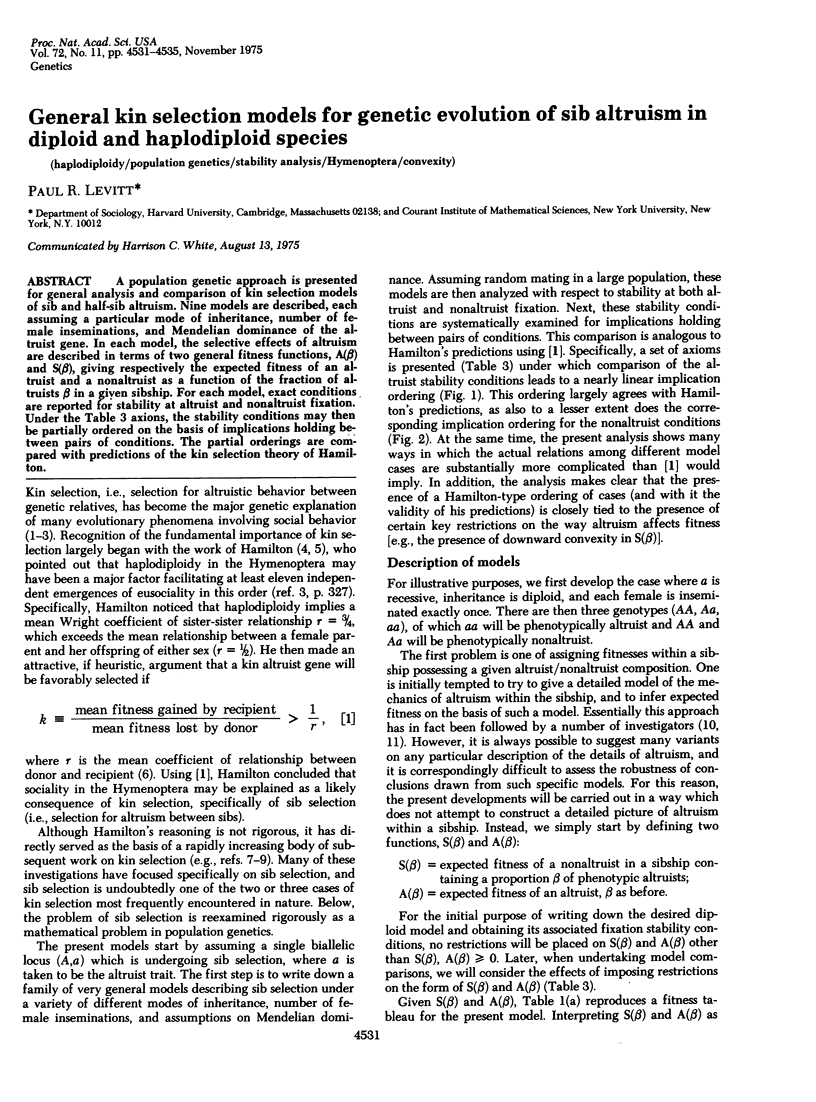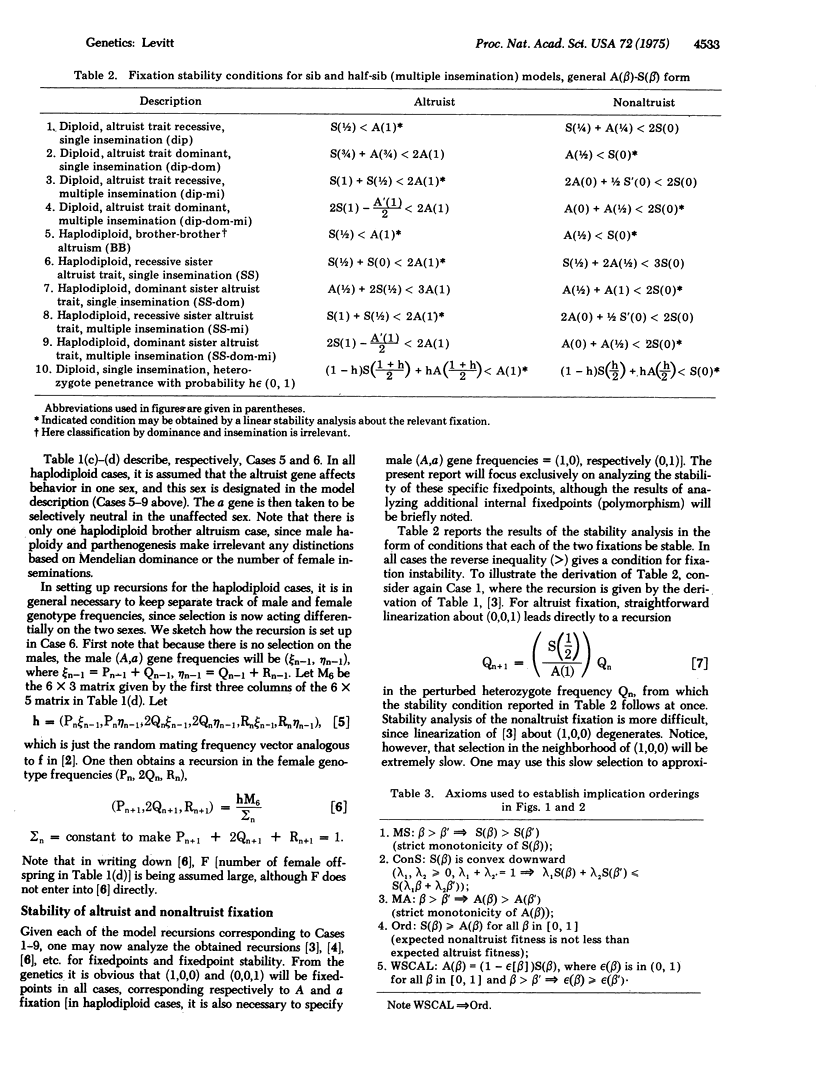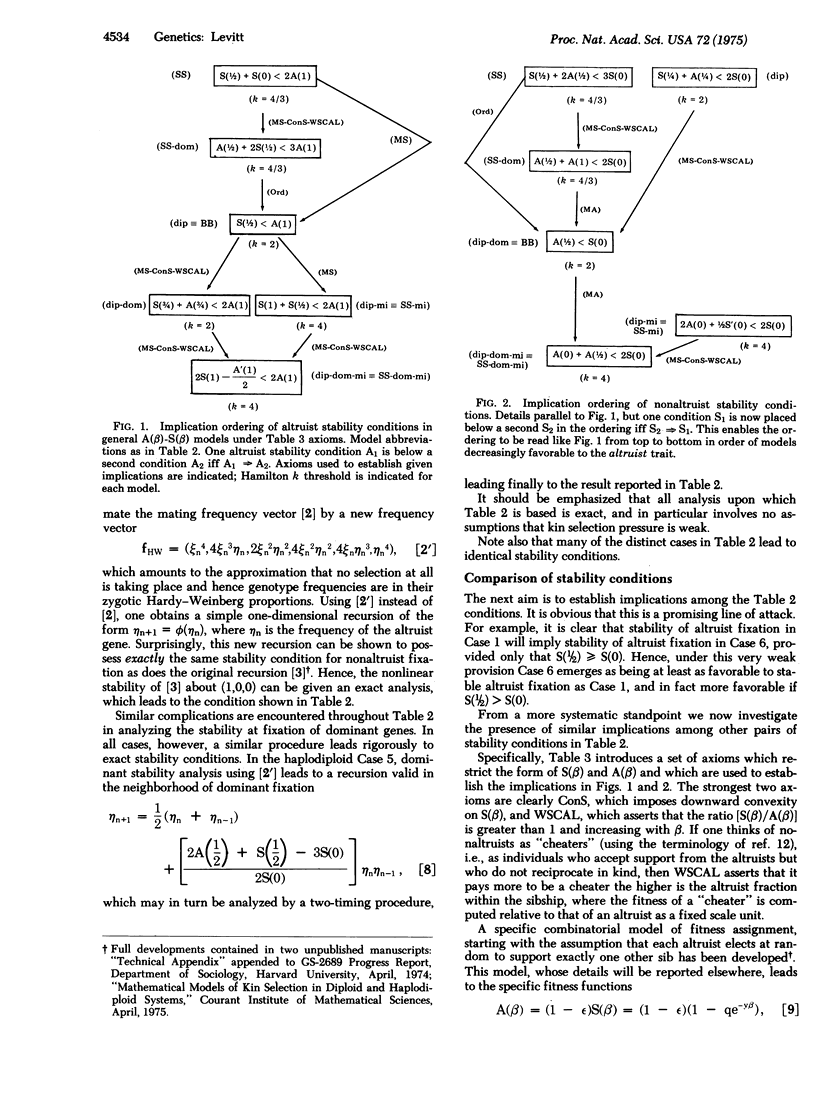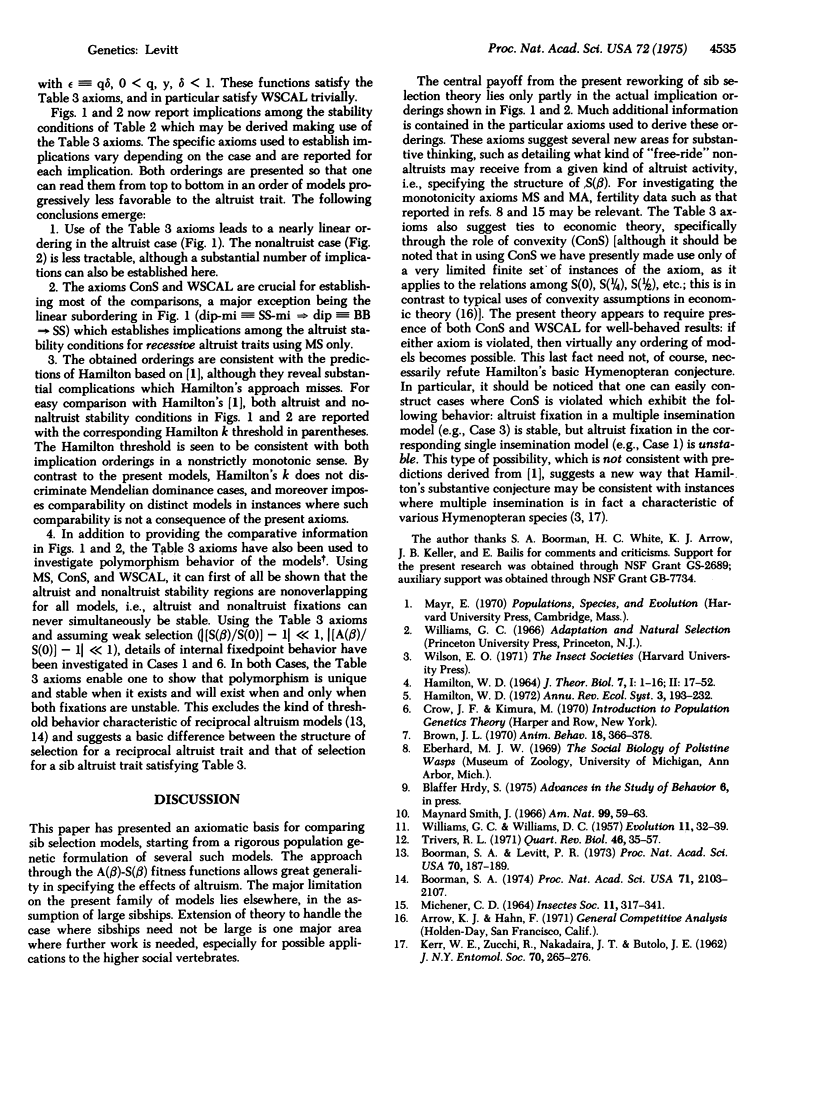Abstract
A population genetic approach is presented for general analysis and comparison of kin selection models of sib and half-sib altruism. Nine models are described, each assuming a particular mode of inheritance, number of female inseminations, and Mendelian dominance of the altruist gene. In each model, the selective effects of altruism are described in terms of two general fitness functions, A(beta) and S(beta), giving respectively the expected fitness of an altruist and a nonaltruist as a function of the fraction of altruists beta in a given sibship. For each model, exact conditions are reported for stability at altruist and nonaltruist fixation. Under the Table 3 axions, the stability conditions may then be partially ordered on the basis of implications holding between pairs of conditions. The partial orderings are compared with predictions of the kin selection theory of Hamilton.
Full text
PDF




Selected References
These references are in PubMed. This may not be the complete list of references from this article.
- Boorman S. A. Island models for takeover by a social trait facing a frequency-dependent selection barrier in a Mendelian population. Proc Natl Acad Sci U S A. 1974 May;71(5):2103–2107. doi: 10.1073/pnas.71.5.2103. [DOI] [PMC free article] [PubMed] [Google Scholar]
- Boorman S. A., Levitt P. R. A frequency-dependent natural selection model for the evolution of social cooperation networks. Proc Natl Acad Sci U S A. 1973 Jan;70(1):187–189. doi: 10.1073/pnas.70.1.187. [DOI] [PMC free article] [PubMed] [Google Scholar]
- Hamilton W. D. The genetical evolution of social behaviour. II. J Theor Biol. 1964 Jul;7(1):17–52. doi: 10.1016/0022-5193(64)90039-6. [DOI] [PubMed] [Google Scholar]


